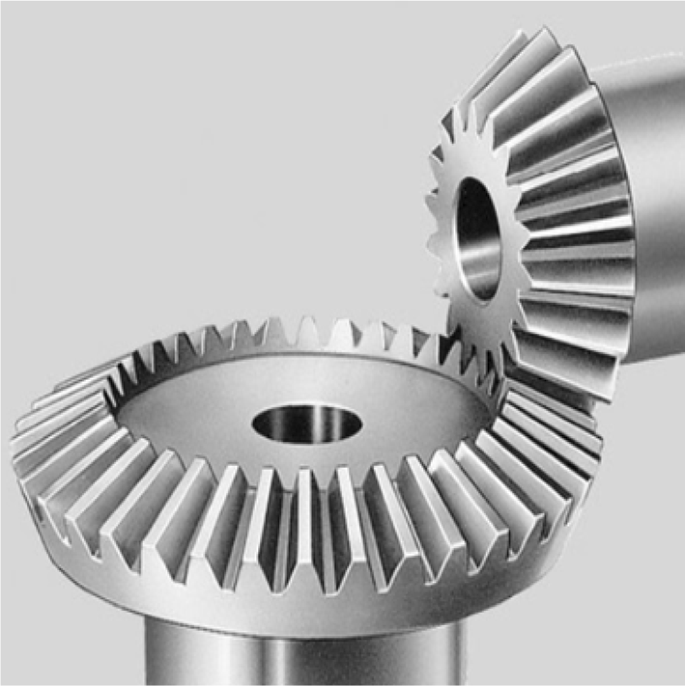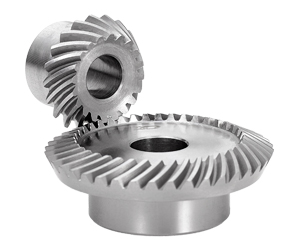- Home
- Popular products
- Bevel Gear Types
Bevel Gear Types
Types of bevel gears are differentiated by the geometry of the overall design.
Here are some of the most common ones in use today:
- Straight Bevel Gears. These kinds of bevel gears have a cone shaped pitch surface. The gear teeth or splines are straight and tapered towards the apex.

Straight bevel gears are the simplest type of bevel gears that transfer power between intersecting axes. They are widely used in low-speed applications or static-loading conditions. Differential gears are one such application where the speed is very low and the load type is mainly static.
- Spiral Bevel Gears. These bevel gears have angled curved splines. The effect of this design is graduated and smoothed spline interlocking.

Spiral bevel gears are designed for applications that require high speed and high torque power. They can help cut consumer costs by providing long-lasting performance with minimal need for repairs or replacements. With spiral bevel gears, there is no need for offsets and a significantly reduced risk of overheating.
- Zerol Bevel Gears.While this kind of bevel gear is very similar to a straight bevel gear, the main difference is that the teeth or splines are curved instead of conical. The ends of each spline is parallel to the axis while the middle of the spline is wrapped around the gear.

Zerol bevel gears are an intermediate type between straight and spiral bevel gears. Their teeth are curved, but not angled. Zerol bevel gears are designed with the intent of duplicating the characteristics of a straight bevel gear but they are produced using a spiral bevel cutting process.
- Hypoid Bevel Gears.These bevel gears are similar to the spiral bevel gear with the only difference being that the pitch surface is hyperbolic in shape instead of conical. This makes the design of the hypoid bevel gear very similar to a worm drive.

This provides more contact area and better tooth strength, which allows more torque to be transmitted and high gear ratios (up to 200:1) to be used.
